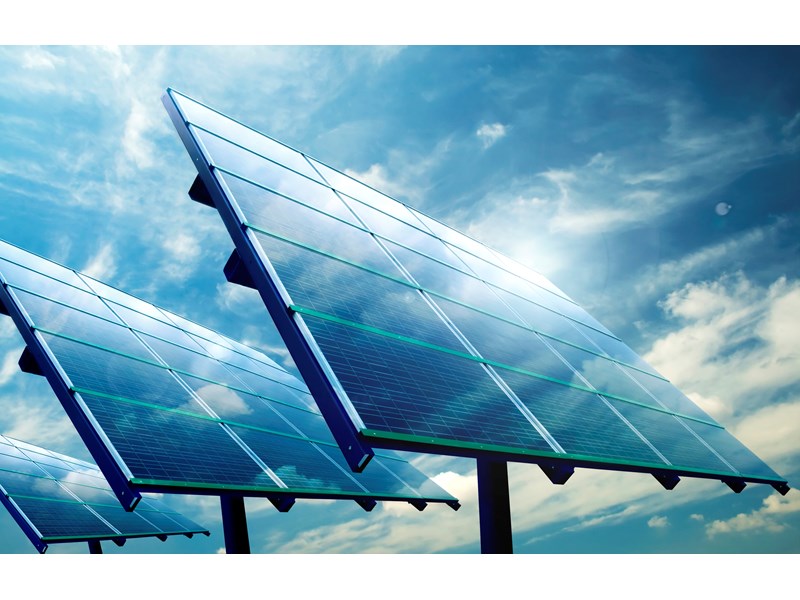3 minute read
Sylvia Leyva Martinez
Principal Analyst, North America Utility-Scale Solar and Host of Interchange Recharged podcast

Sylvia Leyva Martinez
Principal Analyst, North America Utility-Scale Solar and Host of Interchange Recharged podcast
Sylvia researches market dynamics, business models, market developments and financial strategies of solar PV projects
Latest articles by Sylvia
-
Opinion
The oil and gas majors are phasing down their renewable strategies
-
Opinion
The world’s most-used carbon accounting rule is about to get a major overhaul
-
Opinion
The US solar industry faces a perfect storm of Federal policy and trade challenges
-
Opinion
It’s turbulent times for the wind sector in the US, but the outlook is better across the pond
-
Opinion
US$8 billion in clean energy projects were cancelled this year
-
Opinion
What’s the biggest mistake clean energy developers make when chasing tax equity?
Michelle Davis
Head of Global Solar

Michelle Davis
Head of Global Solar
Michelle leads our solar research, identifying emerging industry themes and cultivating a team of solar thought leaders.
Latest articles by Michelle
-
Opinion
What could further trade actions mean for the US solar supply chain?
-
Opinion
Sunny skies ahead: the solar market and supply chain in 2024 and beyond
-
Opinion
Our top takeaways from the Solar & Energy Storage Summit 2024
-
Opinion
The US solar industry is off to a strong start in the first quarter
-
Opinion
Is the IRA paying off for the US solar supply chain?
-
Opinion
US solar shattered records in 2023, but will this continue in 2024?
Sagar Chopra
Senior Research Analyst, Solar

Sagar Chopra
Senior Research Analyst, Solar
Sagar focuses on PV system pricing for US and LATAM regions.
Latest articles by Sagar
-
Opinion
Liberation Day tariffs threaten to disrupt US wind and solar industries
-
Opinion
Supply shortages and an inflexible market give rise to high power transformer lead times
-
Opinion
Top 10 solar PV inverter vendors cornered 86% of the market in 2022
-
Featured
Brighter skies for US solar in 2023? | 2023 outlook
-
Opinion
Is the end of high US solar system prices in sight?
The US solar industry was defined by opposing dynamics in 2022. On one side, the anticircumvention investigation had a paralysing effect in the first half of the year. Alongside trade policy challenges, the industry also dealt with persistent supply chain constraints and labor shortages. On the other, the passage of the historic Inflation Reduction Act (IRA) vastly improved the competitiveness of solar projects through the extension and expansion of tax credits.
The industry has entered 2023 with an air of optimism. Momentum from supportive policy and public interest is growing. Technology continues to evolve, and project costs decline as new capacity comes online.
But it’s not all blue skies. Significant challenges remain, from the global chip shortage to the ongoing labor issue. And the fine print of the IRA will be under scrutiny, with some clarity needed before the industry can fully capitalize on its benefits.
So, what’s the outlook for US utility-scale and distributed solar? And what are the solar tech trends to watch in the year ahead? We tackled these questions in a series of reports. Read on for a brief introduction, and fill in the form for your complimentary copies of all three reports.
US utility-scale solar: the segment will rebound despite challenging trade policy
The growing trend of year-on-year solar installation increases halted for the first time since 2017, reaching only 10 GW in 2022. This represents a 40% decrease compared to 2021. We expect the industry will rebound in 2023, but five key factors will determine the final capacity that comes online by the end of the year.
First, modules detained by the Uyghur Forced Labor Prevention Act (UFLPA) could be released by H1 2023 – if conditions remain constant. The implementation of the UFLPA significantly limited module supply in 2022 as Customs Border and Protection (CBP) seized module shipments until buyers proved the traceability of quartzite. Module manufacturers have worked intensively to increase the traceability of their supply chain, and buyers have developed new raw material evaluation processes.
Will the industry’s efforts come to fruition with a wave of shipment releases? And what are the other four factors that will shape the year ahead? Fill in the form to read US utility-scale solar: 5 things to look for in 2023.
Distributed solar: continued growth will usher in changes to policy and finance
The US distributed solar industry is expected to install over 8 GWdc in 2022, nearly doubling the market size from 2018. Despite the headwinds of 2022, record-breaking retail rate increases continued to drive customer interest in distributed solar power. And as the industry’s momentum grows there will be several key trends to watch in the year ahead.
Looking forward, we expect to see more challenges to retail rate net metering in 2023.

Michelle Davis
Head of Global Solar
Michelle leads our solar research, identifying emerging industry themes and cultivating a team of solar thought leaders.
Latest articles by Michelle
-
Opinion
What could further trade actions mean for the US solar supply chain?
-
Opinion
Sunny skies ahead: the solar market and supply chain in 2024 and beyond
-
Opinion
Our top takeaways from the Solar & Energy Storage Summit 2024
-
Opinion
The US solar industry is off to a strong start in the first quarter
-
Opinion
Is the IRA paying off for the US solar supply chain?
-
Opinion
US solar shattered records in 2023, but will this continue in 2024?
Net metering policies remain a central topic of debate and controversy, for instance. Utility-backed proposals and bills in several states – including California, Florida, Indiana, Idaho, Michigan and North Carolina – sought to cut net metering compensation rates and/or enact fixed charges for distributed solar customers this past year. Looking forward, we expect to see more challenges to retail rate net metering in 2023.
For our view on the drivers of policy evolution, shifts in residential solar financing and the creation of new community solar programs, read US distributed solar: three predictions for 2023. Fill in the form at the top of the page for your copy.
Solar technology: IRA delivers a boost to US domestic manufacturing
The IRA will be crucial for US solar development and domestic manufacturing in 2023. Developers, engineering procurement construction (EPC) companies and manufacturers will all be on the lookout for guidance from the treasury department and the IRS as their strategies for innovation and investment take shape.
Will the IRA herald the resurgence of the US module manufacturing industry? Is inverter and tracker market growth on the cards? Will TOPcon outrace Heterojunction (HJT) technology, and can it bring down system prices?
We explore this and more in Solar supply chain: technological evolutions in solar to look out for in 2023.
Fill in the form at the top of the page for your complimentary copy.










